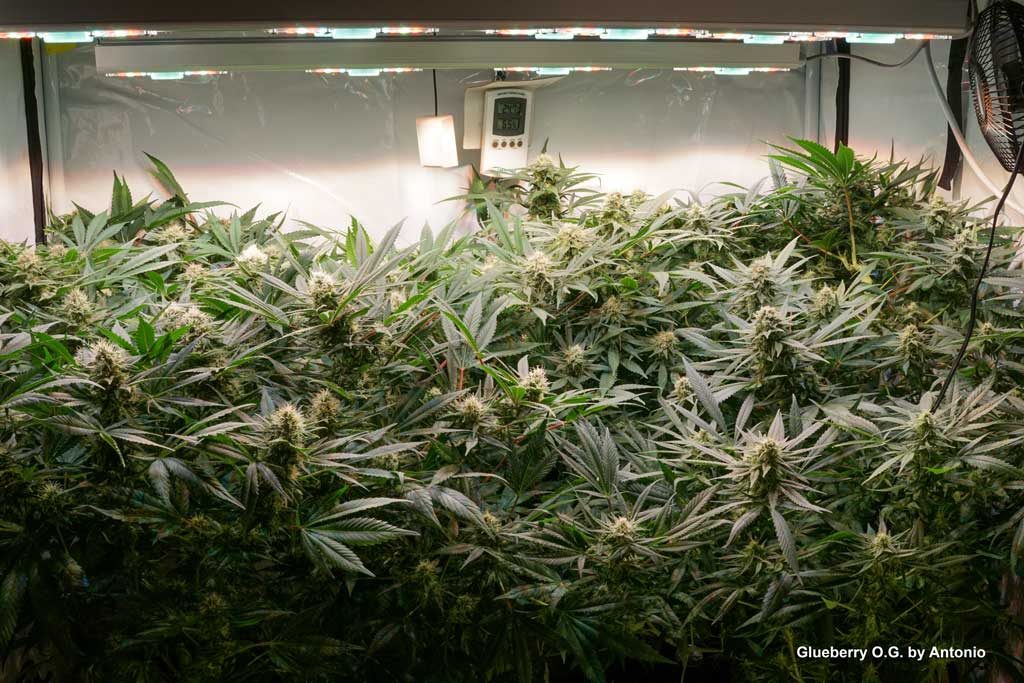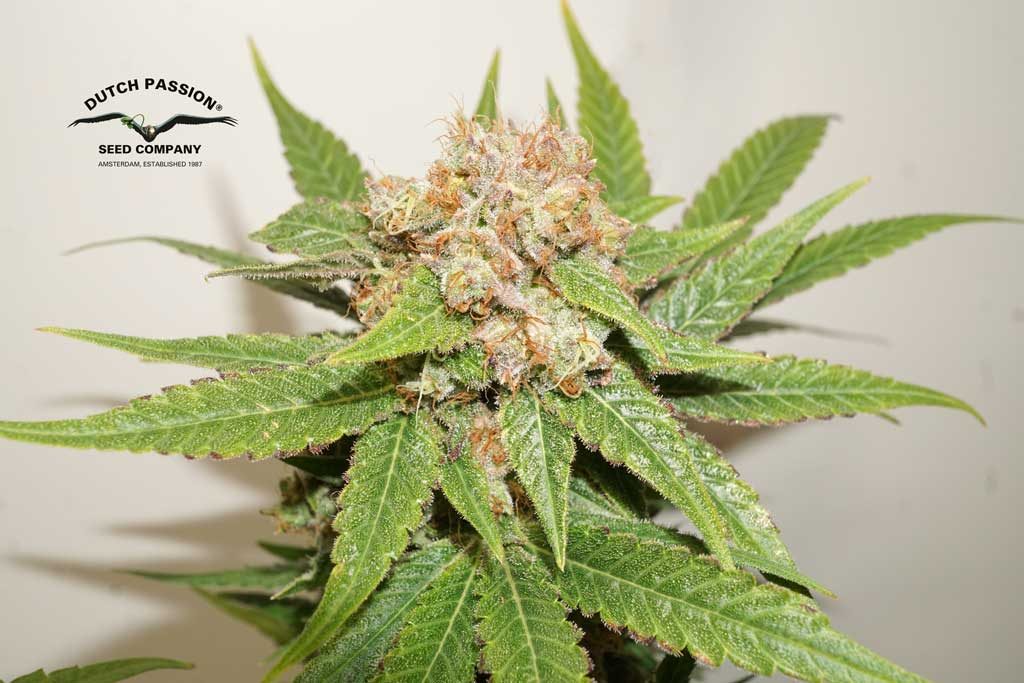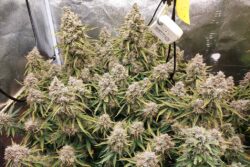Many indoor growers don’t monitor relative humidity when growing cannabis. They just hope that their cannabis seeds will germinate and grow well. More experienced cannabis growers will routinely monitor humidity using a small, inexpensive device. They will understand the potential dangers of excessive humidity levels, especially around harvest. Those growers that understand their local natural humidity levels from one season to the next may even avoid growing in the most humid months or invest in a grow room de-humidifier to reduce humidity (often referred to as % Relative Humidity or %RH) to safe levels.
What is the best humidity for indoor cannabis growing?


The basics of humidity control for indoor cannabis

Humidity is a measure of water vapour in the atmosphere. The hotter the air, the more water vapour it can hold. Although normally thought of as a liquid at room temperature, water also easily forms a vapour which is made of airborne water molecules. When air has a high humidity, it may make you (and your plants) feel warmer than normal – the moisture helps the air to carry additional heat. ‘
- Absolute humidity’ is the total mass of water vapor in a given volume of air, regardless of air temperature. It is usually measured in grams of water per cubic metre.
- Relative humidity (%RH) is a percentage measurement of water vapor saturation relative to its maximum saturation at a particular temperature. This tends to be an easier value to measure.
- 100% RH means at that particular temperature the dew-point has been reached, meaning that moisture droplets can form.
Many growers are aware that high humidity levels can be useful when growing cuttings, which may have incomplete root systems and therefore benefit from a humid grow environment. Conversely, high humidity levels may increase chances of dreaded bud rot/botrytis in late bloom.
That’s why many growers use an inexpensive RH meter (available from around $/£/€ 30) to monitor humidity during their grow. As your plants grow larger and use/transpire greater volumes of water, it may become more of a challenge to maintain low RH levels.
This pitfall can especially happen when growing indoors during warmer/wetter summer months. In these circumstances, maintaining efficient levels of grow room ventilation is of great importance.
What factors affect relative humidity control for cannabis?

Relative humidity control for cannabis is complicated by the fact that it will vary from one season to the next. Even small geographical distances from one neighbourhood to the next can result in significant differences in the types of humidity experienced.
The quality conscious grower tends to monitor the relative humidity whether they grow their cannabis seeds indoors, outdoors or in a greenhouse/polytunnel.
Climate factors:
Your local climate plays a key role in the humidity you experience, even if growing indoors. A steamy, tropical climate with high temperatures (allowing the air to hold more water vapour) may see relative humidity levels regularly above 70%. Florida has an average relative humidity of around 75% requiring many of the more serious growers to invest in dehumidifiers and air conditioning. Occasionally ambient relative humidity will exceed 80% in some cities.
Conversely, Scandinavian growers may notice their breath condensing when they exhale into the naturally low relative humidity outdoor winter air.
Growers in such low relative humidity circumstances may also notice small static sparks when stroking their cat, touching door handles etc. Indoor cannabis growers in these climates may consider adding a humidifier to their grow room at certain times of the year.
The observant cannabis grower who monitors relative humidity will be aware how it drifts from one season to the next. Late summer may seem to experience the worst %RH issues for some growers, crisp winter days may offer the lowest %RH levels.
Many indoor growers who have suffered the pain of losing precious blooms to bud rot may choose to adjust their grow calendar to avoid harvesting during the most humid months.
Outdoor cannabis growers who have suffered intractable bud rot issues when growing photoperiod feminised seeds have the option to consider autoflowering cannabis seeds which are often ready to harvest a month or two earlier. This could be the difference which allows an otherwise unusable outdoor climate to produce great quality cannabis.
Recent years have proven to be a real challenge with some of the highest ever summer temperatures coming in the last decade. This presents ongoing challenges for the indoor, outdoor and greenhouse cannabis grower.
One noticeable trend, especially among the more professional licensed growers, is to have fully climate controlled indoor grow rooms. This allows consistent quality levels from one crop to the next, though not all home growers can afford all the kit (air-con, adjustable fans, control units, sensors etc) required to create a perfectly stable year-round indoor climate.
Many indoor hobby growers in hot countries simply avoid growing in the warmest months if they cannot afford air-con.
Your grow room micro-climate is one that you can have a great deal of influence over. Often the more cash you can invest in climate control, the more stable you can maintain your relative humidity levels, temperatures and other variables.
But even budget growers can achieve top quality harvests if they start with the best cannabis seeds and avoid growing in extreme weather. Many indoor growers that can’t afford air conditioning simply avoid growing in the hottest months and achieve superior quality harvests as a result.
When grow room temperatures exceed 30ºC you can expect both potency and taste/aroma (terpene profile) to suffer significantly.
Other factors:
One cause of high grow room temperatures is the use of HPS lights. With inherently higher heat emissions from HPS lights, %RH invariably rises higher than it needs to do as the warm air absorbs more moisture. These days most serious growers recognise that superior THC levels and terpene profiles that come from the best LED grow lights. These operate at higher efficiency levels than HPS with lower heat/IR emissions.
Grow room ventilation is one of those topics which become of increasing interest as the grower gains experience. Many growers that started with a basic extraction fan end up graduating to fully automated climate control systems that monitor and adjust input/output fan speeds to maintain an optimised grow environment. And few look back!
Related:
Cannabis grow room ventilation guide
Sometimes the best option available to a grower with plants approaching late bloom in high relative humidity conditions is to use a dehumidifier. These are widely available and are most effective inside the grow tent/grow location where they directly remove moisture from the air. Many of them make an audible hum which may be audible outside your grow room – a consideration for bedroom growers.
Relative humidity often increases after watering your plants. Again, the best advice for any grower who feels their plants may be on the borderline for %RH is to monitor their humidity with a meter.
Some cannabis genetics are better than others at coping with life in high relative humidity environments. Outdoor growers may find the Dutch Passion Outdoor cannabis seed collection to be useful. All varieties are more resistant to bud rot – a common threat when growing cannabis with high relative humidity as harvest approaches.
Related:
Dutch Outdoor Cannabis Seed Collection
Those growing outdoors in tropical climates, may prefer to lean towards sativa cannabis seeds which have evolved with a more open bud structure. This allows the plants to cope better with high levels of relative humidity during late bloom.
To complicate matters further, your cannabis plant has different responses to relative humidity at different stages of its life. A young cutting or seedling may have an incomplete root system.
Growing it in a harsh, hot and dry environment may exceed it’s ability to replenish moisture levels. Growing the cannabis seedling/clone in a propagator for a few days with high relative humidity may be the best option.
What is the ideal humidity level for indoor cannabis?
Many growers will ‘get away’ without paying significant attention to %RH. But the more serious growers will monitor humidity and adjust conditions accordingly when growing their plants as well as when drying and curing the buds. The more you can optimise relative humidity during your plants development the higher your chances of pushing your cannabis seeds to their full genetic potential.
High humidity levels can be tolerated during the first week or two, and may even help. The easiest and most reliable way to germinate cannabis seeds is between two pieces of moist (not soaked) cotton pads.
Temperatures of around 20-25ºC with a humidity level around 65-70% gives good results for cannabis seedlings.
Related:
Best way to germinate cannabis seeds – moist cotton pads
Humidity levels around 60-75% deliver solid veg growth. For cuttings which haven’t fully rooted, humidity levels around 85-90% can be helpful, these may be easier to achieve with a mini plastic dome (or similar) above your plants.
Many growers aim for 45-50% humidity levels during flowering, especially during late bloom when the chances of bud rot are at their greatest. The best cannabis seeds can give rise to long, thick and dense blooms. Good ventilation during late bloom is recommended, ensure no ‘dead’ spots in your grow room with stale-air and no ventilation. Remove all dead/waste plant material and combine good grow room cleanliness levels alongside low humidity levels
Bonus tip – drying/curing cannabis at the correct humidity:
You invested in the best cannabis seeds, pimped your grow room to the max with the latest LED tech and delivered a stellar harvest.
Now your premium quality buds deserve connoisseur drying and curing! This is often achieved by slowly drying the buds and patiently curing them. After cutting down the cannabis plant, many will dry the buds slowly, sometimes in brown paper bags to ensure a controlled drying.
Curing the cannabis buds involves slowly releasing the last remnants of moisture, opening the jars occasionally. The process may take the connoisseur a couple of months using humidity levels of around 52%-62% inside the jars. Around 55% humidity is ideal.
Those that strive for perfect buds often use the humidity regulating bags from Boveda or Integra Boost to maintain the perfect curing environment inside the jars.
Perfectly cured cannabis buds are one of the greatest rewards for the serious, quality-focussed grower. The buds deliver a pungent aroma thanks to the well-preserved terpene profile, they crumble easily into an oily slurry without being too dry. Best of all, perfectly cured buds deliver the ultimate vaping/smoking experience. Aroma, taste and effect should all be as good it gets!
Indoor cannabis growing humidity control is key

Humidity control when growing cannabis is the sign of an experienced grower that understands the role of humidity at various stages of the plant life cycle. The final process of drying and curing the cannabis buds also has it’s own precise demands for those keen to optimise each and every stage.
If you haven’t bothered much with the finer points of humidity control when growing cannabis then an easy way to begin is with a basic humidity meter. Start by monitoring the humidity levels in your tent at various stages of growth, perhaps at different times of the year. You can then move on to trying to control/optimise conditions. And you will notice a significant improvement to plant health, growth and final bud quality if you can master humidity control in your grow room.
Remember, the pro-growers don’t invest so much time, effort and money in their climate/humidity control without good reason! With a small amount of additional focus on humidity control you may be able to significantly improve the quality of your own cannabis harvests.


















